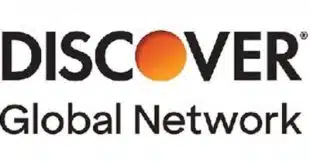Despite massive publicity in the nearly 18 months since its introduction, Apple Inc.’s Apple Pay mobile-payment service still isn’t getting a whole lot of usage. But the few users it has tend to like it.
In fact, a December study of 1,279 smart-phone users for First Annapolis Consulting Inc. shows awareness and usage of Apple Pay is down slightly from the spring of 2015. On the plus side, the addition of retailers’ loyalty programs holds the potential for boosting usage.
Obviously, Apple Pay still has hurdles to clear. While 73% of the surveyed consumers were aware of Apple Pay in December, that was down from 75% last spring. About 600 of the respondents had one of Apple’s iPhone 6 models—the phone that supports Apple Pay—and 84% of them were aware of Apple Pay.
But, as with the overall respondent base, awareness among the iPhone 6 users, which was 88% last spring, had slipped.
Usage, too, was off. Only 20% of the iPhone 6 users in December reported having used Apple Pay at least once, down from 22% in the spring survey. Among those that had tried Apple Pay, 15% said they use it regularly or frequently compared with 19% earlier in 2015.
Hugh Gallagher, a principal at Annapolis, Md.-based First Annapolis, says the declines found in December are largely within the survey’s margin of error. But the clear message is that Apple Pay isn’t busting the charts.
He says Apple Pay suffers from the same ailments affecting all mobile-payment services, including lack of a strong use case compared with credit and debit card payments and a lack of merchant-acceptance locations. Also, 30% to 35% of consumers have experienced problems with mobile transactions.
“It’s a variety of factors. Obviously, for the bulk of non-users there is the issue, ‘Why do I need this, the card works well,’” Gallagher says, adding that some smart-phone owners use few if any of the myriad apps on their devices, let alone a payment one. “And we’ve got the limited acceptance issue.”
Apple Pay uses near-field communication (NFC) technology to communicate with point-of-sale terminals. Research firm Phoenix Marketing International estimates that about 1.5 million U.S. merchant locations can now process NFC transactions, but almost half of these are vending machines.
In Apple Pay’s favor is the increasing base of retailers’ loyalty programs plugged into the service, which gives it more utility for so-called in-app purchases and partially compensates for the lack of POS acceptance. Merchants linking their loyalty services to Apple Pay now include Walgreens, BJ’s Wholesale Club, Kohl’s, and JCPenney.
Some 34% of Apple Pay users reported in December that they were in-app users only, compared with just 11% last spring.
While about a third of users have had some problem with a transaction, 60% of Apple Pay users in December reported being very satisfied with their Apple Pay experiences, up from 53% last spring, and 34% were somewhat satisfied, unchanged from the previous survey.
The low levels of dissatisfaction show that Apple Pay usage could boom if Apple’s many card-issuing partners promote the service, according to Gallagher.
A similar First Annapolis survey of Samsung Galaxy smart-phone customers shows slightly less mobile-payments usage compared with Apple Pay, according to Gallagher. First Annapolis planned to release results from that survey as Digital Transactions went to press.
The margin of error for the iPhone 6 subset of users was plus or minus 3.3 percentage points at the 95% confidence level.
—Jim Daly




